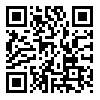BibTeX | RIS | EndNote | Medlars | ProCite | Reference Manager | RefWorks
Send citation to:
URL: http://jpbud.ir/article-1-1087-en.html
2- university of Atayollah Boroujerdi
Unemployment is one of the most important challenges of Iran’s economy which affects on society and economic performance. The purpose of this paper is examining the effect of exchange rate gap (difference between official and parallel market rates) on unemployment rate in Iran during 1974-2012 based on Markov-Switching model. The empirical results indicate that, in high unemployment regime, exchange rate gap increases unemployment in Iran. Also, transition probabilities indicate that the probability of remaining in high unemployment regime is more than the low unemployment regime that this problem is because of employment instability in the country. Furthermore, the net export coefficient indicates that increasing net export lead to decrease unemployment in both regimes. So, one of the most important employment policies might be export expansion in the country.
Received: Oct 31 2014 | Accepted: Dec 15 2015 | ePublished: Dec 15 2015
| Rights and permissions | |
.jpg) |
This work is licensed under a Creative Commons Attribution 4.0 International License. |







